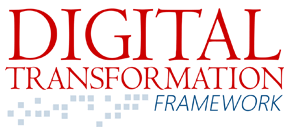When you hear the word “automation,” what comes to mind: expenses, doubt, intimidation? Fortunately, we can help show you the reality of automation.

There has been a seismic shift in how our clients view automation, and it happened so quickly that few have taken the time to reflect on it. Automation was once considered a more strategic conversation. Forward-thinking business leaders leveraged automation to gain a competitive advantage. It allowed businesses to scale and reduce costly errors while containing the high costs associated with human workers. The good news is that none of this has changed. Automation still offers these advantages and more. What has changed, however, is that automation can no longer be viewed through just a long-term, strategic lens. Rather, it has become a tactic necessary to offset global labor shortages. Some businesses large and small have been forced to shift their mindsets from “we should automate this process eventually in order to thrive” to “we must automate this process immediately in order to survive.” Fortunately, it could not have happened at a better time, because automation is becoming more practical and affordable than ever.
You don’t have to look far to see the effects of the labor shortage. Our own Carrie Rudolph wrote about its effects on software development in a recent article. It’s not just in the Information Technology department either. The U.S. Chamber reported recently that there were around 11.5 million job openings in the United States in March with less than 6 million people seeking to fill them1. Business leaders are being asked to accomplish more with less. Many of our clients are experiencing a revolving door of workers as they seek to “retain the best and automate the rest.” Resourceful leaders are focusing their priorities on what they can control — streamlining and automating business processes.
“Many of our clients are experiencing a revolving door of workers as they seek to ‘retain the best and automate the rest.’ Resourceful leaders are focusing their priorities on what they can control — streamlining and automating business processes.”
I was recently working with a client who lost a key Quality Assurance (QA) person. The traditional thinkers in the room immediately started drafting a job description for a replacement, pondering how and where they could find a person with the necessary skills. A forward-thinking leader in the room took a more practical approach. He rationalized that even if the perfect person were found right away, it could be weeks or months before they contributed at a high level and quality would suffer in the near term. As an alternative, he recommended tools he had researched for automating the QA process that would allow for consistent quality at scale for a relatively low cost. The solution mitigated risks associated with future turnover in the quality department as well.
When I say the word “automation,” do you envision dollar signs, complex circuit boards, or busy process maps? Are you immediately turned off thinking about the amount of time that will be required for you to plan an automation project? Are you overwhelmed thinking about where to start? Do you struggle to even think of tasks that could be automated? I assure you, some of the more obvious opportunities for automation are right before our eyes and we don’t recognize them as such. The reality is that automation doesn’t have to be expensive or complicated. Modern technology allows for a micro approach to automation. Choose a simple task or process to experience a win, then more opportunities for automation will become apparent to you.
If you still aren’t sure where to start, ask us. Through observation, time studies, and our Digital Transformation Framework, we can help you identify opportunities for automation that you may not have considered. When possible, we leverage the technology you already have. When appropriate, we introduce new technologies to increase your capacity. It costs nothing but a few moments of your time to get the conversation started. Download a copy of our Digital Transformation Framework, and we’ll explain how to schedule a complimentary Digital Transformation advisory services session with a member of our team.
Written By:

Rob Wilson
Principal Consultant, Southeast Region
Applications Solutions Group

Keller Schroeder’s Digital Transformation Framework includes tenets to help you identify, prioritize, execute, and learn from transformational initiatives to better prepare you for the next disruption – whatever it may be! Click here to download your complimentary copy.




